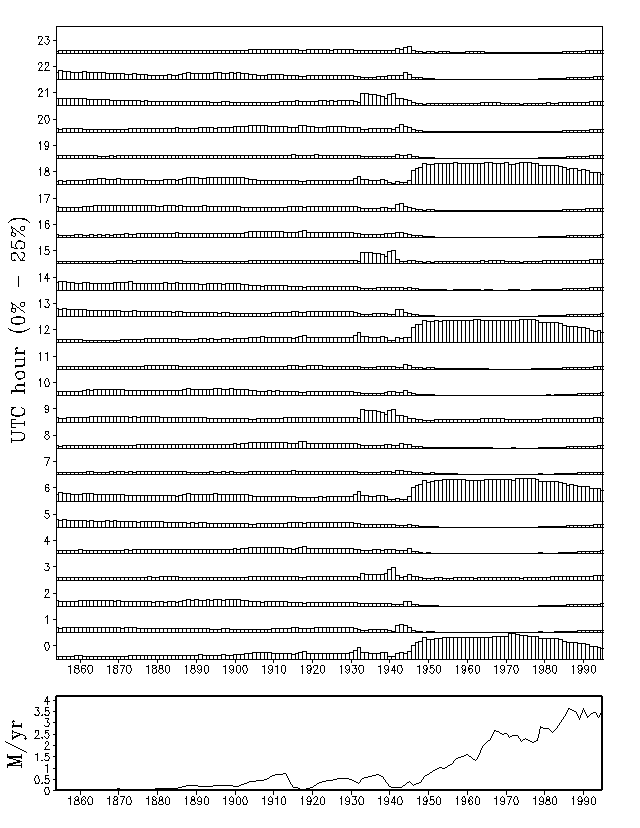
| Data and Documentation | Chronology and News | Program Status | Publications | Related Data and Resources | Contact Points |

Fig. 4. Global percentage of reports per UTC hour, for 1854-1995. A division of 25% was used between hours (i.e., a bar extending across four divisions would represent 100%). Shown below is the number of reports (corresponding to the solid curve in Fig. 2). Prior to about 1930, most of the available data were reported periodically according to local time (e.g., 00, 04, 08, 12, 16, 20 local time; Parker et al., 1995), yielding a fairly uniform global distribution. After World War II, in contrast, most ships started reporting according to a synoptic schedule, primarily at 6-hourly times (00, 06, 12, 18 UTC) and to a much lesser extent at intermediate 3-hourly times. Japanese (deck 118; ref., Fig. 3) data mainly account for the maxima at 6-hourly intervals shifted by 3 hours from the UTC 6-hourly synoptic times during ~1933-41 due to reporting at 00, 06, 12, 18 local time. Note the decrease in 6-hourly data starting about 1980 corresponding to an increase in 3-hourly or hourly (mainly buoy) data.
U.S. National Oceanic and Atmospheric Administration hosts the icoads website privacy disclaimer
Document maintained by icoads@noaa.gov
Updated: Nov 8, 2005 23:57:21 UTC
http://icoads.noaa.gov/egs_paper_fig4.html